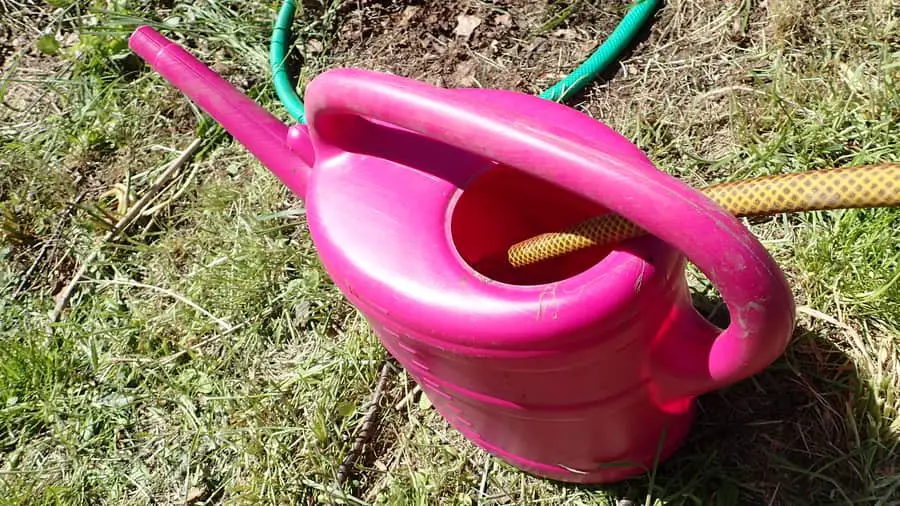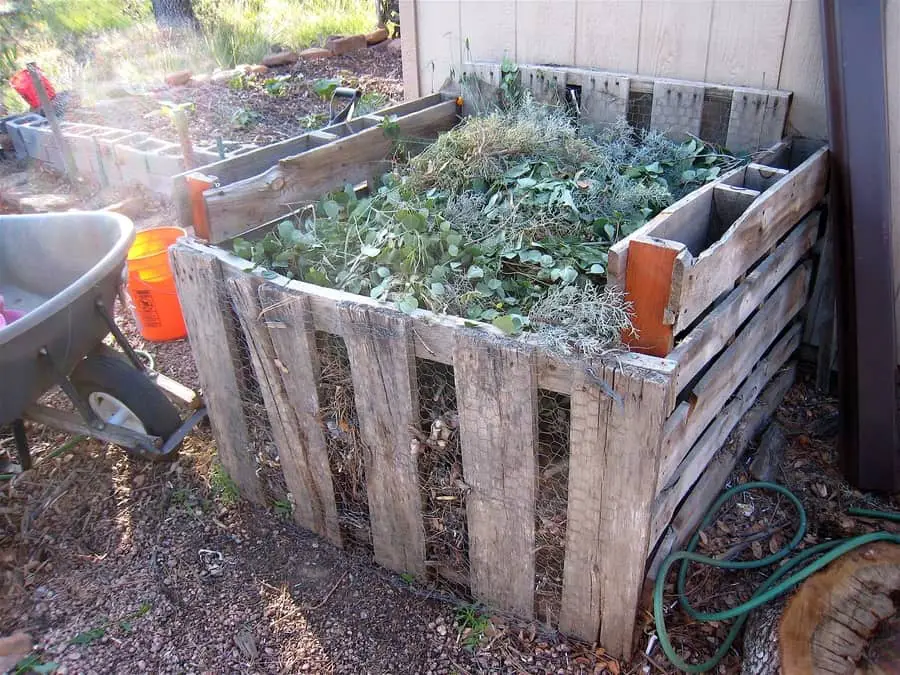Many gardeners growing compost for the first time are confused about the amount of water a compost pile needs. We decided to set the record straight with this guide to watering your compost pile.
Compost is a highly beneficial organic soil supplement created by using their kitchen and garden waste. It is also known as black gold because of its wide range of benefits for garden soil. Composting is a great way to get rid of organic wastes and isn’t all that hard if you know the basics.
Should you water your compost pile? Watering a compost pile is a good idea during extended dry periods. Make sure to gradually apply water and let it soak in. A compost pile should be damp, not wet.
There are various variables in determining the amount of water required by a compost pile throughout the season. Let’s get a good grasp on the basics and understand how to optimally manage water while composting.
Table of Contents
Why Is Water So Important For Composting?

The main question that most people ask us is — why is water such an essential ingredient for composting? There are several reasons, and we’ll go into each of them.
Firstly, the microorganisms breaking down the compost pile need water for their metabolism and, ultimately, survival. Therefore, a dried compost pile will stop decomposing.
Secondly, the beneficial microorganisms use water to transport themselves into different parts of the compost heap. They slip and slide between the water layers so that all sections of the pile are broken down.
In addition, water helps to modulate the temperature of the compost heap. Ideally, the compost heap should not exceed a temperature of 140°F as temperatures higher than this can kill off the beneficial microorganisms.
If you regularly turn your compost pile and provide the pile with adequate water, your pile will undergo aerobic composting. An insufficiently maintained compost pile will either stop decomposing or start anaerobic composting. Most people dislike anaerobic composting because of the foul smell it produces.
How To Identify A Lack Of Water In Your Compost Pile?

If you’ve been reading this long, you now know how important water is for composting. However, how do you know when to water the compost pile? Experts agree that home gardeners can assess the situation visually and act accordingly.
Have a good look at the compost pile. If it looks like parts of the pile are completely dry or in the process of drying, you should add some water to it. No magic here. There is no set time after which you need to water your compost pile. A few hours or days of dry conditions also won’t completely kill your compost, it just might take a bit longer to break down.
There is a good rule of thumb to keep in mind. Similar to garden soil, it’s beneficial to keep a damp environment below the first inch of compost.
How Often Do You Need To Water Your Compost Pile?

Now, most composting beginners often ask, how often should I water my compost pile? Unfortunately, there is no exact answer to this question as it varies from place to place. In dry & hot regions, you might need to water your compost pile almost every day. In colder areas, it might be many days before you need to water your compost heap.
The only way to know for sure is to observe your compost heap every few days and note how moist it is. Don’t sweat it too much, composting shouldn’t become a chore – just take a few seconds every time you bring out the kitchen wastes. Make sure to make a small hole to check the inside condition of your pile. The Surface will almost always be dry when it isn’t raining.
What Is The Right Amount Of Water For Your Compost?

The amount of water you add to your compost pile depends on your heap size and how quickly your compost pile dries out. These factors are usually determined by how often you turn your compost and the climate in your area.
The water content of a composting pile should be about 40-60% water. So if you touch the compost and it has the wetness of a wrung-out sponge, your compost pile has the perfect amount of water!
If you’re worried that you might be underwatering or overwatering your compost pile, there is a simple test that will help you find out. Just put on a pair of gloves and squeeze a bit of compost between your hands. If a lot of water flows out, you have probably overwatered your compost. If no water flows out, your compost pile is too dry. Your compost pile will have the ideal amount of moisture if you squeeze it and only a few drops of water come out.
What Is The Best Way To Water Your Compost?
All the microorganisms involved in composting need water to thrive. When watering your compost, ensure that the water reaches all parts of the compost pile and penetrates the compost heap’s surface.
An excellent way to ensure that all sections of the compost heap are equally moist is to turn it while watering. Just make sure that you do not drown the compost heap entirely. Instead, try to spray water onto the pile through a nozzle or a watering can. I’d recommend using any kind of diffuser, otherwise, it’s quite hard to properly spread the water.
If watering the compost heap is too much work for you, just use the garden hose to shower the pile with a little bit of water. Alternatively, you can keep the compost heap close to your garden sprinklers if it dries out too quickly.
If your compost heap is too big and you don’t think the lower layers are getting enough moisture, remove the layers on top, water the bottom layers and then replace the top layers. This step will ensure that all sections of the pile get an adequate supply of water.
Additionally, you can add ingredients such as coffee grounds or fresh grass clippings as they retain more moisture than other ingredients in the compost pile.
What Are The Water Requirements During The Different Stages Of Composting?

Composting typically undergoes three phases of breakdown: the mesophilic phase, which is the moderate temperature phase, the thermophilic phase in which the pile’s temperature rises significantly, and the maturation phase in which the pile gradually cools down.
When the composting process is starting in the mesophilic phase, you need plenty of water to get started. At this point, when you’re watering your compost pile, make sure to wet all parts of the heap so that it feels like a moist sponge when you touch it.
However, as the composting process enters the thermophilic phase, the pile does not need as much water as before. Just make sure that no part of the compost pile is drying out, and you’re good to go. This trend will continue well into the maturation phase of the composting pile.
What Happens If You Add Too Much Water To Your Compost Pile?

A frequent problem that arises when newbie gardens create compost piles is overwatering. Many novice gardeners end up adding too much water, which causes the composting process to halt.
All microorganisms that metabolize food aerobically need air to function. When you overwater your compost pile, you drown those bacteria in water and cut their air supply
When you’ve added too much water to the compost pile, there are two paths that the process can take. It will start anaerobic composting, which is slower and smells much worse than aerobic composting, or the composting process will stop altogether.
While anaerobic composting is an actual method to make compost, most people don’t like it because of the awful smell it produces.
What can you do about this problem? The fastest way to get your compost back in order is to let it dry in the sunlight. Simply spread out your compost a bit (preferably onto a tarp). Let it dry until damp to touch, then reassemble the pile. Be careful not to overdo it!
Another thing is adding dry ingredients such as straw, dried leaves, dried grass clipping, and shredded newspaper or cardboard. These ingredients will attract some of the excess water in the compost heap, and your mixture will be moderately damp once all the dry ingredients are sufficiently mixed in.
